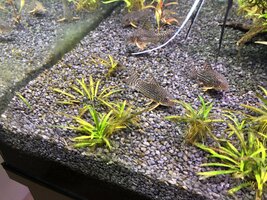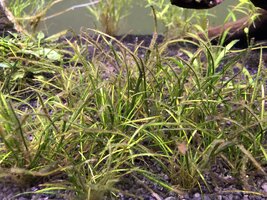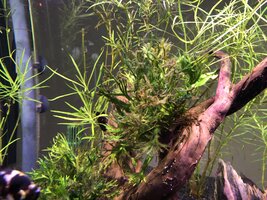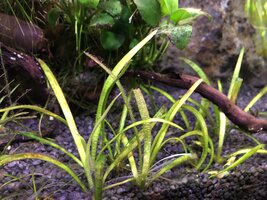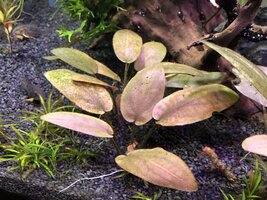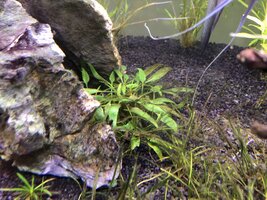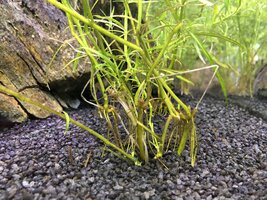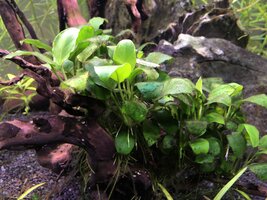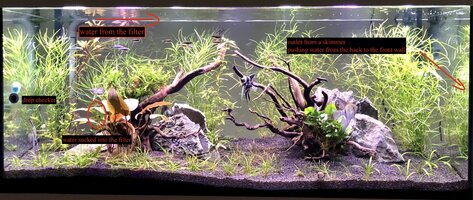Jan_H
New Member
Hi,
I am relatively new to the hobby (having aquarium one year). Useful information on this forum made me register and ask for help. I have a 300 liter tank. I used tap water that was treated by a water softener (ion exchange Ca/Mg -> Na). During this period GH was 5, KH 16-18. Suboptimal plant growth; all my plants are beginners' plants. After repeatedly reading that such water is not good for aquariums, I have installed an additional valve upstream from the ion exchanger. Since November (=4 months now) I use untreated water for every water exchange. GH has gradually risen and now it stable (GH=KH=16-18). Things have improved. I see better growth of the plants, but I also fight with algae (pretty much all - diatoms, GSA, BBA, BGA).
NO2 is not an issue (not measurable), fish are doing fine.
I am using CO2 from the beginning but I had to pump insane amounts of CO2 to get the drop checker at least blue-green. I found out that the problem was the JBL inline diffusor (something was not tight enough, CO2 was leaking somewhere and not going through the membrane, not producing fine bubbles). One month ago, I have purchased another inline diffusor (Q-Grow) and now I finally see, how this is supposed to work. Set to 120 dpm, the 20 mg/l drop checker is constant light green = since one month, I finally have stable and sufficient levels of CO2 in the tank. I also see a decrease in pH (used to be 7.6+, now I measure 7.3-7.4).
Since the growth of algae was picking up, I decided to use EasyCarbo. This helps, but the tank is clearly not in equilibrium (it never was). I now focus on optimizing nutrients. NO3 is typically 15-30 mg/l and it comes at this level in the tap water. PO4 and Fe are not measurable. In my opinion, the algae growth comes from too much NO3 and not enough PO4 and Fe. I add these to water column (EasyLife Fosfo and JBL Ferropol). I add 0.2 mg/l pf PO4 once a week and 20 ml of Ferropol (0.1 mg/l of Fe) 4 days after the PO4.
I have plenty of light (7x 10W modules, 180 lm/W = 12600 lm, 42 lm/l). Currently dimmed to roughly 3/4 of the max. The tap water has increased levels of SiO2 (approx 3 mg/l), I guess that explains the diatoms. I used to have SilicatEx in the filter, but removed it before Xmas, after I have read that it impacts also iron availability and that if aquarium is in equilibrium diatoms disappear despite the high levels of SiO2.
What I have read in this thread makes me believe that I should be able to end up with eye pleasing aquarium despite the high levels of GH/KH, without having to buy a RO unit. Am I doing the right things? Light was always OK, CO2 is OK now, there is abundance of Ca2+ and Mg2+, no more Na2+. I expected that once I regularly add PO4 and Fe (my limiting factors?), I will see that NO3 levels will go down, but they stay more or less constant. Shoudl I add even more PO4/Fe? Or are the plants are too tired/weak after months of suffering and I am only making things worse by adding other nutrients that cannot be used at the moment? Do plants grow slower in hard water and I should focus on reducing NO3? How would I do this? I am thankful for any advice/suggestion.
I am relatively new to the hobby (having aquarium one year). Useful information on this forum made me register and ask for help. I have a 300 liter tank. I used tap water that was treated by a water softener (ion exchange Ca/Mg -> Na). During this period GH was 5, KH 16-18. Suboptimal plant growth; all my plants are beginners' plants. After repeatedly reading that such water is not good for aquariums, I have installed an additional valve upstream from the ion exchanger. Since November (=4 months now) I use untreated water for every water exchange. GH has gradually risen and now it stable (GH=KH=16-18). Things have improved. I see better growth of the plants, but I also fight with algae (pretty much all - diatoms, GSA, BBA, BGA).
NO2 is not an issue (not measurable), fish are doing fine.
I am using CO2 from the beginning but I had to pump insane amounts of CO2 to get the drop checker at least blue-green. I found out that the problem was the JBL inline diffusor (something was not tight enough, CO2 was leaking somewhere and not going through the membrane, not producing fine bubbles). One month ago, I have purchased another inline diffusor (Q-Grow) and now I finally see, how this is supposed to work. Set to 120 dpm, the 20 mg/l drop checker is constant light green = since one month, I finally have stable and sufficient levels of CO2 in the tank. I also see a decrease in pH (used to be 7.6+, now I measure 7.3-7.4).
Since the growth of algae was picking up, I decided to use EasyCarbo. This helps, but the tank is clearly not in equilibrium (it never was). I now focus on optimizing nutrients. NO3 is typically 15-30 mg/l and it comes at this level in the tap water. PO4 and Fe are not measurable. In my opinion, the algae growth comes from too much NO3 and not enough PO4 and Fe. I add these to water column (EasyLife Fosfo and JBL Ferropol). I add 0.2 mg/l pf PO4 once a week and 20 ml of Ferropol (0.1 mg/l of Fe) 4 days after the PO4.
I have plenty of light (7x 10W modules, 180 lm/W = 12600 lm, 42 lm/l). Currently dimmed to roughly 3/4 of the max. The tap water has increased levels of SiO2 (approx 3 mg/l), I guess that explains the diatoms. I used to have SilicatEx in the filter, but removed it before Xmas, after I have read that it impacts also iron availability and that if aquarium is in equilibrium diatoms disappear despite the high levels of SiO2.
What I have read in this thread makes me believe that I should be able to end up with eye pleasing aquarium despite the high levels of GH/KH, without having to buy a RO unit. Am I doing the right things? Light was always OK, CO2 is OK now, there is abundance of Ca2+ and Mg2+, no more Na2+. I expected that once I regularly add PO4 and Fe (my limiting factors?), I will see that NO3 levels will go down, but they stay more or less constant. Shoudl I add even more PO4/Fe? Or are the plants are too tired/weak after months of suffering and I am only making things worse by adding other nutrients that cannot be used at the moment? Do plants grow slower in hard water and I should focus on reducing NO3? How would I do this? I am thankful for any advice/suggestion.


